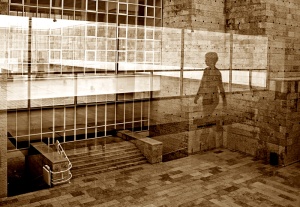 Talking with WNYC newscaster and ‘All Things Considered’ host Amy Eddings recently, I learned that before she became a journalist she used to write fiction. “But my novelist friends talked about hearing the voices of their characters in their heads as they wrote. I never heard those voices,” she said. “That was when I realized I was better suited to nonfiction.”
Talking with WNYC newscaster and ‘All Things Considered’ host Amy Eddings recently, I learned that before she became a journalist she used to write fiction. “But my novelist friends talked about hearing the voices of their characters in their heads as they wrote. I never heard those voices,” she said. “That was when I realized I was better suited to nonfiction.”
I’ve never thought of the difference between fiction and non-fiction writing quite like this, but she’s right, I think. Long ago I read an interview with Alice Walker in which she spoke about writing her novel The Color Purple. She worked alone in a small house, and every day her characters – whom she identified as ancestors – would come in and hang out for a while, telling her their stories. “When I was writing The Color Purple I was just in service,” she said. “I don’t know if you’ve ever had the experience of knowingly putting yourself in service to whatever it is … where you really know what you’re supposed to be doing, and you’re there. You’re on the job. You give up everything else to do that. So I was serving these ancestors basically. And I did it as well as I could do it. It was like prayer.”
Writing a novel isn’t always like that, but most fiction writers will recognize Walker’s depiction of being at the mercy, one way or another, of her characters, of being beholden to their points of view. Writing fiction – listening to the voices in your head – requires entering a kind of dream state, a consciousness that isn’t your own. Part of the joy and the pain of writing fiction is that at some point, if it’s going well, these strange, unbidden voices take over.

